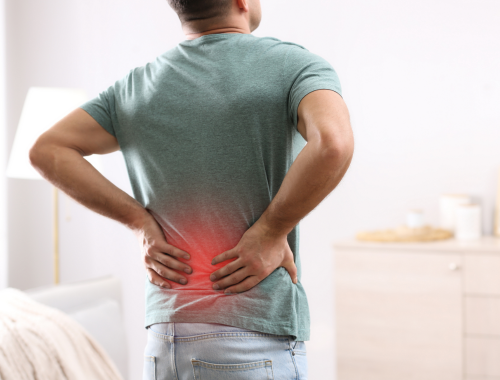Understanding Joint Pain: An Overview
Joint pain is a debilitating ailment that affects millions of people worldwide, limiting mobility, functioning, and overall quality of life. It is important to address and manage joint discomfort, regardless of whether it results from an accident, arthritis, or another underlying issue. In this thorough book, we will dig into practical ways for relieving and preventing joint pain, allowing you to take control of your body’s health.
Tapentadol 200mg is a larger dose of the medicine used to treat moderate to severe pain. Tapentadol 200mg, like the 100mg dosage, is an opioid analgesic. Its mode of action includes binding to the mu-opioid receptor and blocking norepinephrine reuptake, resulting in dual pain relief benefits.
Identifying Root Causes
Before going on a quest to reduce joint pain, it is critical to understand the underlying reasons. Joint discomfort may occur owing to a variety of circumstances, including:
1. Arthritis:
Osteoarthritis, rheumatoid arthritis, and gout are typical causes of joint pain. These disorders cause inflammation, cartilage degeneration, and joint injury, resulting in discomfort and stiffness.
2. Injury:
Traumatic injuries, including fractures, dislocations, and ligament tears, may cause acute or persistent joint discomfort. Proper diagnosis and therapy are critical for successful recovery and pain control.
3. Overuse injuries
May result from repetitive motions, vigorous activities, or joint tension, producing inflammation and pain. Recognizing and correcting actions that lead to overuse is critical for pain relief.
Tapentadol 100mg is a medicine used to relieve moderate to severe pain. It is an opioid analgesic. The major method of action is to bind to the mu-opioid receptor and impede norepinephrine reuptake. This multimodal mechanism helps manage pain by influencing both the opioid and noradrenergic pathways.
Effective Strategies for Joint Pain Relief
1. Exercise:
Regular low-impact exercise regimens, such as swimming, cycling, and yoga, improve joint flexibility, strength, and mobility. Engage in activities that are appropriate for your fitness level and preferences to reduce joint stress while optimizing benefits.
2. Weight Management:
Keeping a healthy weight decreases strain on weight-bearing joints, including the knees and hips. A well-balanced diet rich in fruits, vegetables, lean meats, and whole grains promotes weight control and joint health.
3. Maintaining:
Correct posture and ergonomics throughout everyday activities and job duties reduce joint strain and the chance of musculoskeletal problems. Invest in ergonomic furniture and equipment to provide comfort and support.
4. Alternating
Heat and cold treatments help alleviate joint discomfort and inflammation. To relieve stiff joints, use heat packs or warm compresses; for acute pain and swelling, use cold packs or ice baths.
5. vitamins and drugs:
Work with a healthcare expert to determine the appropriate vitamins and drugs to manage joint discomfort. Glucosamine, chondroitin, omega-3 fatty acids, nonsteroidal anti-inflammatory medications (NSAIDs), and corticosteroid injections are all possible treatment options.
6. Physical Therapy:
Personalized physical therapy sessions help improve joint mobility, strength, and function. A trained physical therapist uses specific exercises, manual methods, and modalities to maximize rehabilitation and pain reduction.
7. Mind-Body Practices:
Mindfulness meditation, deep breathing exercises, and guided imagery may promote relaxation, reduce stress, and manage pain. Develop a comprehensive approach to wellness to help your body’s natural healing processes.
Buy tapentadol online is a centrally acting analgesic (pain reliever) that treats moderate to severe pain. It is classed as an opioid analgesic and comes in both immediate and extended-release forms. Tapentadol binds to mu-opioid receptors in the central nervous system and inhibits norepinephrine reuptake.
Preventative Strategies for Long-Term Joint Health
In addition to treating present joint pain, preventive actions are critical for long-term joint health and vitality. Consider the techniques below:
Stay Active: Regular physical exercise helps to maintain joint function and flexibility.
Maintain a Healthy Diet: Eat nutrient-dense foods to promote joint health and general well-being.
Avoid overexertion: Pace yourself when exercising to avoid overuse injuries and joint strain.
Stay Hydrated: Drink enough water every day to keep your joints lubricated and flexible.
Listen to your body. Pay attention to signals of discomfort and adjust your activity appropriately to avoid worsening joint pain.
Conclusion
To alleviate joint pain, a holistic strategy is required, including lifestyle changes, therapeutic treatments, and prevention measures. Exercise, weight control, good posture, and other measures mentioned in this article may help you manage pain, improve joint function, and improve your overall quality of life.
